“Metal Extrusion’s ability to create complex shapes with excellent surface finishes, high strength, and precise tolerances has solidified its place as a cornerstone of modern manufacturing.”
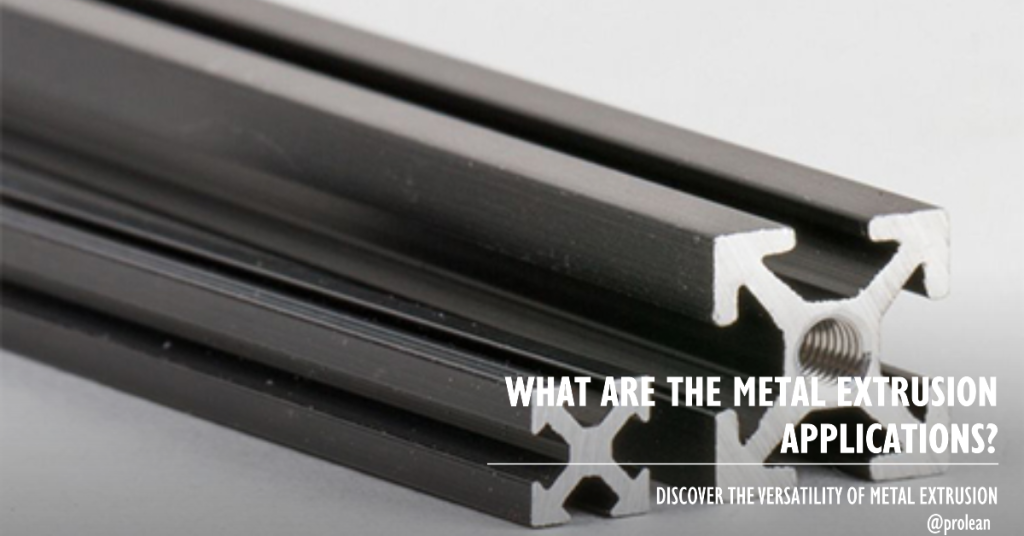
Metal extrusion is a formidable process in the manufacturing industry, transforming metal into parts and components with specific cross-sectional profiles. This method involves forcing metal through a die of the desired shape, producing long metal products with uniform cross-sections. The versatility of metal extrusion applications makes it indispensable across various sectors, including aerospace, automotive, construction, and electronics.
This content will provide a comprehensive exploration, including myriad applications of metal extrusion.
What is Metal Extrusion?
It is a manufacturing technique where metal is forced through a die to form a specific shape. This process starts with a solid or hollow billet of heated metal. It’s then pressed through a die, creating a continuous length of metal with a uniform cross-section. The technique is suitable for complex cross-sectional profiles with excellent surface finish and material properties.
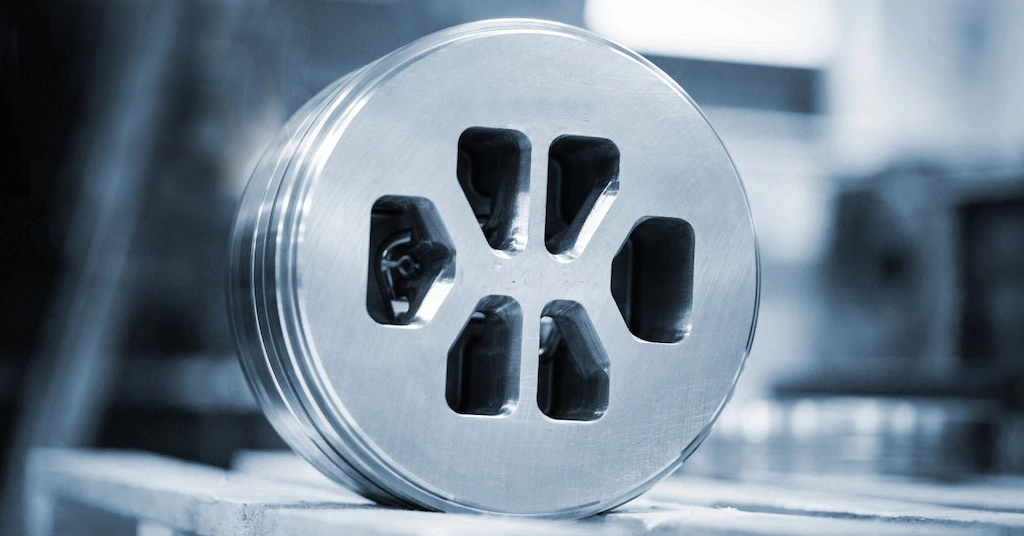
Metal extrusion die
In terms of process, there are two types of metal extrusion: hot and cold variants. Hot extrusion involves heating the metal, making it easier to push through the die. On the other hand, Cold extrusion is performed at or near room temperature, offering higher strength and tighter tolerances. The choice between the two depends on the material and the required properties of the final product.
The machinery involved in metal extrusion includes hydraulic or mechanical presses, capable of exerting enormous pressure. These presses force the metal through the die. Supporting equipment, such as heaters for hot extrusion and cooling systems for extruded parts, are integral to the process. This setup ensures the metal flows smoothly through the die, resulting in high-quality extruded products that meet specific industry standards.
Related: Aluminum Extrusion Applications Across Industries
Try Prolean Now!
Metal Extrusion for the Electronics Industry
Metal extrusion has an essential role in developing heat sinks and crafting enclosures and frames. This specialized manufacturing process, which pushes metal through a shaped die to form continuous profiles, is critically embraced for its precision and versatility. It plays a vital role in producing components with complex shapes and excellent physical properties, tailored to the stringent demands of electronic applications.
1. Heat Sinks
These components, crucial for cooling electronic devices, leverage the superior thermal conductivity of metals like aluminum, shaped into efficient designs that maximize heat dissipation. The process enables the creation of intricate fin profiles and channels, enhancing the cooling efficiency critical for maintaining the performance and longevity of both consumer electronics and LED lighting systems. The precision of metal extrusion allows for the optimization of heat sinks, directly impacting the thermal management strategies of electronic devices.
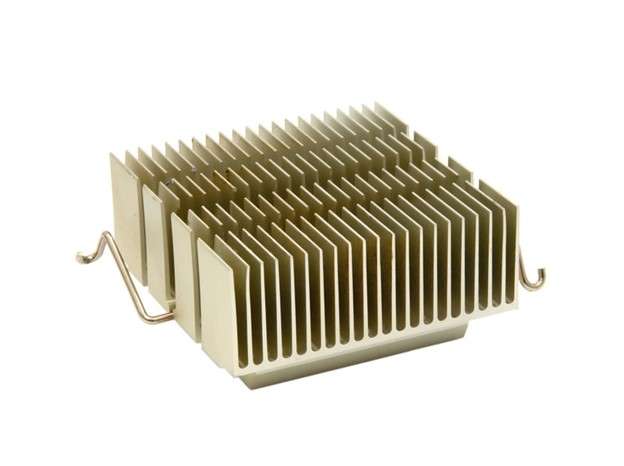 2. Electrical Enclosures
2. Electrical Enclosures
Similarly, closures and frames through metal extrusion underscores its significance in providing protection and structural integrity to electronic systems. Enclosures for computer and server housings are precisely engineered to accommodate specific components, integrating cooling mechanisms and ensuring robust protection against physical and electromagnetic interference.
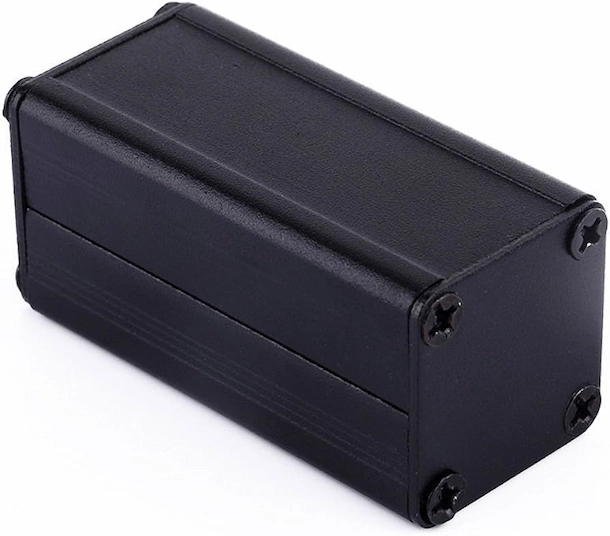
Aluminum extruded enclosure
3. Electrical conduits
These are other products of metal extrusion, designed to safeguard electrical wiring, crucial for the uninterrupted operation of electronic devices. The adaptability of metal extrusion facilitates the production of these protective components, tailored to the unique configurations and requirements of various electronic applications.
Through these specific applications—heat sinks, enclosures, and frames—metal extrusion is indispensable in the electronics industry.
Related: Precision VS Accuracy in Machining: Understanding the Difference and Importance
Wind Turbine Components as Metal Extrusion Applications
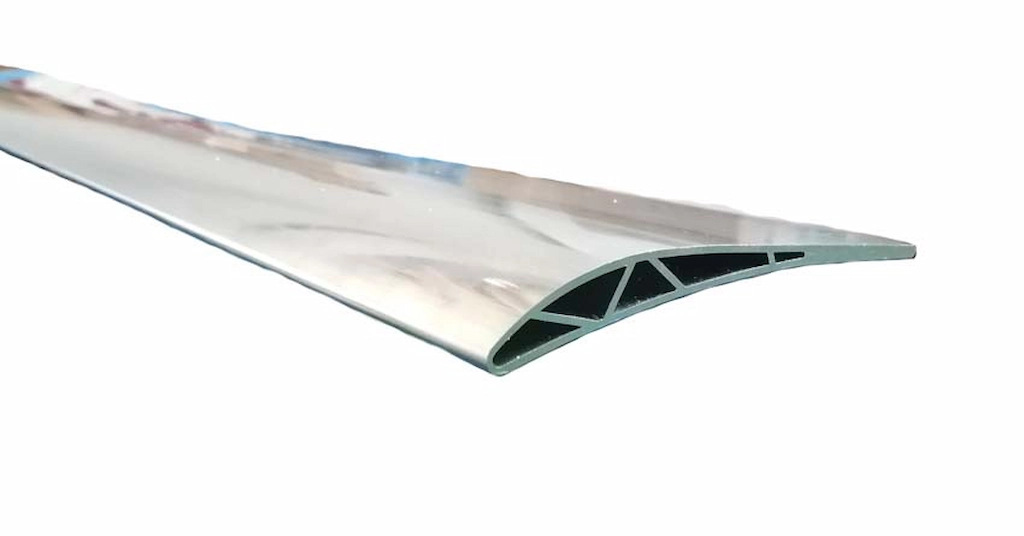
A wind turbine part made with metal extrusion
Metal extrusion applications have a crucial role in wind turbine components manufacturing. Its ability to produce strong, lightweight, and durable metal parts is instrumental in creating elements of wind turbines, such as tower sections and blade roots. Metal extrusion’s precision and flexibility allow for the design and manufacture of components that meet the specific demands of wind turbine construction.
1. Tower Section
For tower sections, metal extrusion facilitates the creation of large and cylindrical components. These sections must withstand immense forces and varying weather conditions, necessitating materials and manufacturing processes that offer high strength-to-weight ratios and corrosion resistance. Metal extrusion answers these requirements by enabling the production of tower sections that are not only structurally sound but also cost-effective and efficient to produce.
2. Blade Roots
Similarly, the blade roots, where the blades connect to the hub, benefit significantly from metal extrusion. This process creates complex geometries that can endure the tremendous stresses encountered at this critical juncture. By utilizing extruded components for blade roots, manufacturers can ensure a tight, secure fit between the blades and the hub, optimizing the turbine’s performance and durability.
Related: Aluminum CNC Machining for Wind Turbines – A Case Study
Metal Extrusion Application in the Automotive Industry
Metal extrusion creates complex, lightweight, and robust components critical for modern vehicles. It produces parts with precise tolerances and superior mechanical properties by pushing metal through a die. Hence, it is essential for automotive applications where safety and performance are paramount.
Furthermore, the versatility of metal extrusion supports the automotive sector’s needs, from structural integrity to aesthetic appeal. It facilitates the development of components that contribute to the vehicle’s lightweight.
Table: Metal Extrusion Automotive Applications
| Application | Metal | Description |
| Chassis Components | Aluminum, Steel | Extruded parts that form the vehicle’s frame, enhancing structural strength. |
| Engine Parts | Aluminum and copper | Components such as heat exchangers, improve engine efficiency and cooling. |
| Transmission Shafts | Steel and aluminum | These are Critical for transmitting power from the engine to the wheels, ensuring smooth vehicle operation. |
| Door Frames | Aluminum, Steel | Provide structural support and contribute to vehicle safety in case of side impacts. |
| Suspension Systems | Aluminum | Components that absorb shocks, improving ride comfort and handling. |
| Crash Management Systems | Aluminum | Extruded profiles are designed to absorb and distribute impact energy in collisions, protecting occupants. |
Metal Extrusion Parts and Products for Household Items
Metal extrusion plays a significant role in the household items sector, crafting components that combine durability with aesthetic appeal.
This manufacturing process produces intricate designs and shapes, perfect for various household applications. From furniture frames that provide structural integrity to decorative elements that enhance interior aesthetics, metal extrusion offers endless possibilities. Its ability to produce strong, lightweight, and complex parts makes it a go-to choice for manufacturers aiming to blend functionality with style in household products.
- Furniture Frames: Offering support and shape to sofas, chairs, and tables.
- Kitchen Utensils: Including handles for pots and pans, providing durability and heat resistance.
- Door Handles and Locks: Enhancing security with robust metal construction.
- Lighting Fixtures: Creating bases and frames for lamps and chandeliers, allowing for unique designs.
- Window Frames: Ensuring strength and weather resistance for both aesthetics and functionality.
- Curtain Rods: Offering both decorative appeal and sturdy support for draperies.
- Shelving Units: Extruded components that contribute to the rigidity and stability of storage solutions.
Try Prolean Now!
Aerospace Metal Extrusion Parts and Products
Metal extrusion is crucial for producing parts that meet the required strength, precision, and weight efficiency. This process enables the creation of complex cross-sectional profiles essential for various aerospace applications.
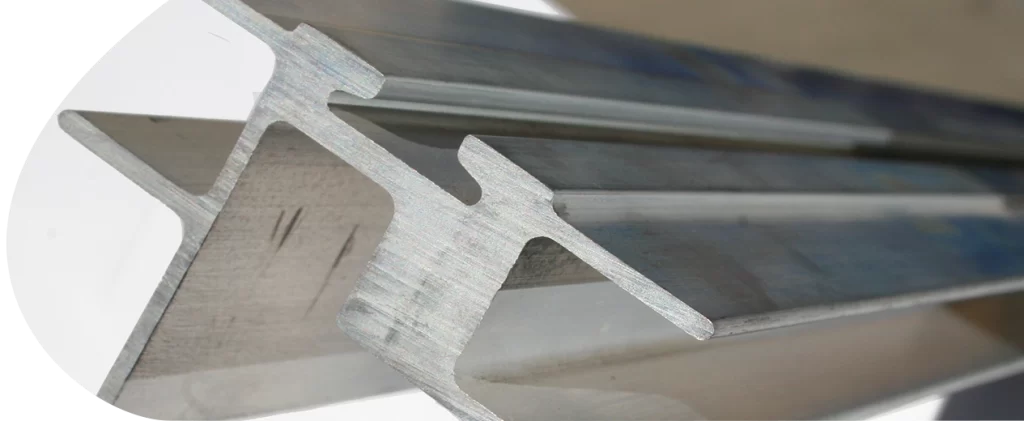
Aerospace metal extrusion
Consequently, metal extrusion provides the reliability and performance required in this demanding field. Its ability to form high-strength, lightweight metals into intricate shapes makes it indispensable for crafting components that ensure the safety and efficiency of aerospace vehicles.
- Airframe Structures: Including beams and supports that form the skeleton of aircraft.
- Fuselage Sections: Metal extrusion is the central body of aircraft, accommodating passengers and cargo.
- Wing and Tail Components: These are essential for flight stability and control.
- Engine Mounts: The secure attachment points for engines.
- Seat Tracks: It Allows for adjustable seating configurations within the cabin.
- Fuel Systems: Including pipes and conduits for efficient fuel distribution.
- Landing Gear Parts: The components that endure high stress during takeoff and landing.
- Electrical Conduits: Ensuring protected pathways for wiring throughout the aircraft.
Common Medical Applications of Metal Extrusion
The medical industry increasingly relies on metal extrusion for its precision manufacturing needs. It can manufacture intricate, high-strength components essential in medical devices and equipment. Metal extrusion’s capability to produce parts with tight tolerances and complex shapes makes it ideal for applications where accuracy and reliability are paramount.
Moreover, metal extrusion offers the advantage of material versatility, enabling the use of biocompatible metals such as titanium and stainless steel. These materials are crucial for implants and surgical instruments, ensuring they meet the stringent standards of the medical field.
Table: Metal Extrusion in Medical Industry
| Application | Metal | Description |
| Surgical Instruments | Stainless Steel, Titanium | Tools for performing operations, requiring precision and durability. |
| Implants | Titanium, Cobalt-Chromium | Components like bone screws and joint replacements need biocompatibility and strength. |
| Medical Frames and Supports | Aluminum, Stainless Steel | Structures for hospital beds and wheelchairs, offering stability and support. |
What are the Different Metals for Extrusion?
This process caters to a spectrum of metals, each bringing its distinct properties to the fore. Aluminum, steel, and copper are among the most prominent, each chosen for specific applications due to their unique characteristics. Moreover, metal impacts not just the extrusion process but also the functionality, durability, and cost-effectiveness.
1. Aluminum Extrusion
Aluminum is a frontrunner in the extrusion process, prized for its lightweight nature, corrosion resistance, and excellent conductivity. The ease with which it can be extruded into complex shapes makes it a favorite across numerous industries.
- Transportation: For manufacturing frames, body panels, and components in automotive and aerospace industries.
- Construction: Used in window frames, doors, and structural supports.
- Electronics: Enclosures for devices and heat sinks.
- Consumer Goods: In furniture and household items.
2. Steel Extrusion
Steel is known for its remarkable strength and durability. The extrusion of steel, though more challenging than aluminum due to its higher melting point, yields components capable of withstanding extreme conditions. Advances in extrusion technologies have broadened steel’s applicability, ensuring its role in constructing the backbone of industrial and infrastructure projects.
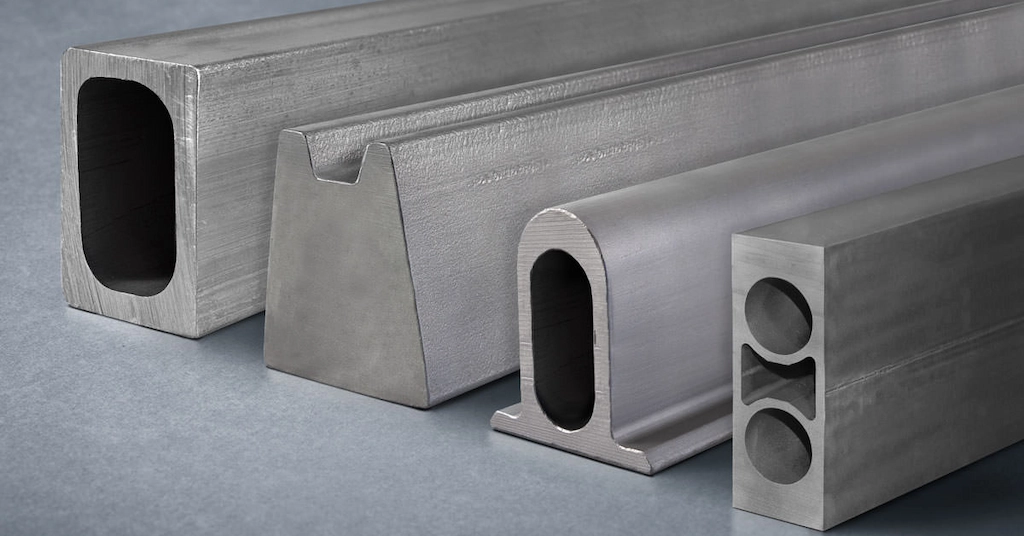
Custom steel extrusion part
- Construction: Beams, columns, and framework, provide the skeleton of large structures.
- Automotive: Axles, frame parts, and safety components that demand high strength.
- Machinery: Parts for heavy machinery where wear resistance is crucial.
- Tools: High-strength tooling components.
3. Copper Extrusion
Copper excels in extrusion for its outstanding electrical and thermal conductivity, making it indispensable in electrical applications. Its antimicrobial properties and natural resistance to corrosion further enhance its utility in various sectors.
- Electrical Systems: Wiring, connectors, and busbars for efficient power distribution.
- Cooling Systems: Heat sinks and heat exchangers.
- Plumbing: Pipes and fittings, benefiting from copper’s corrosion resistance.
- Architecture: Decorative elements and fixtures, leveraging copper’s aesthetic appeal.

Copper extrusion parts
Through these diverse applications, metal extrusion emerges as a versatile and indispensable manufacturing technique. Aluminum, steel, and copper each serve pivotal roles across various industries, chosen for their specific properties that align with the demands of different applications.
Trust Prolean for Metal Extruded Parts
Trust Prolean for your metal extruded parts, where precision meets efficiency. Our state-of-the-art extrusion services ensure high-quality, durable components tailored to your specifications. From aluminum to steel and copper, we work with diverse metals. So, we can adapt to the diverse needs of industries such as automotive, aerospace, and construction.
At Prolean, innovation is at the heart of what we do. Our team of experts leverages advanced technology and deep industry knowledge to offer custom extrusion services. Whether you’re seeking complex profiles or simple shapes, our commitment to precision and quality stands unmatched.
Choosing Prolean means opting for reliability and unparalleled service. Our streamlined production process ensures timely delivery, meeting your deadlines without compromising quality. Trust us to be the foundation of your manufacturing needs, where your satisfaction is our top priority.
Read more:
Try Prolean Now!
Summing Up
Metal extrusion applications span from the skies of aerospace to the intricacies of medical devices, underscoring the process’s adaptability and precision. As industries are continuously seeking innovation, the demand for innovative and high-quality metal extruded products will undoubtedly increase. Metal extrusion’s ability to meet this demand—through its diverse applications—confirms its enduring significance in modern manufacturing.
FAQs
What is metal extrusion?
It is a manufacturing process that shapes metal by forcing it through a die to create products with a uniform cross-section.
Why is metal extrusion important for modern industries?
Metal extrusion provides a versatile, efficient method to produce complex shapes with high precision and excellent material properties, crucial for numerous applications across various sectors.
Can metal extrusion be used for custom parts?
Absolutely. The process is highly adaptable, allowing for the creation of custom-designed parts tailored to specific industry needs.
What metals are commonly used in extrusion?
Aluminum, steel, copper, and titanium are among the most commonly extruded metals, each chosen for their unique properties and applications.
Are extruded products durable?
Yes, extruded products are known for their strength, durability, and resistance to environmental factors, making them ideal for use in challenging conditions.
Resources
- Dewang, Y. (2018, July 5). A study on the metal extrusion process. 2. Retrieved from https://www.researchgate.net/publication/326210297_A_study_on_metal_extrusion_process
- Qamar, S. Z. (2019). Shape Complexity in Metal Extrusion: Definitions, Classification, and Applications. Arabian Journal for Science and Engineering, 44(12). https://doi.org/10.1007/s13369-019-03886-8

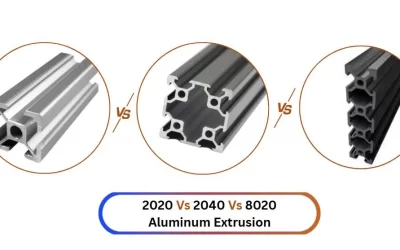
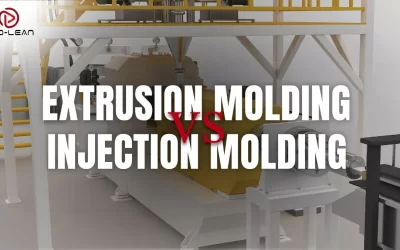
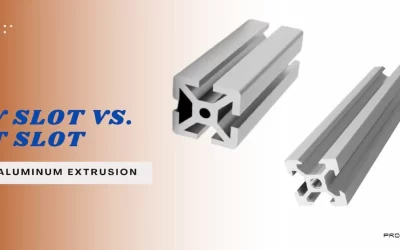
Yes the metal extrusion “perfect balance” the precion and afforadability. The blog loaded with very meaning insights.